Explore Maun - Botswana Travel, Africa
Maun, located in the heart of Botswana, is a bustling town that serves as the gateway to the Okavango Delta, one of Africa's most breathtaking wildlife reserves. Maun, known as Botswana's adventure capital, provides guests with a unique combination of urban convenience and accessibility to spectacular natural surroundings. Whether you're seeking thrilling safaris, cultural experiences, or a tranquil retreat, Maun stands as a beacon for all types of adventurers. With its rich cultural backdrop and numerous attractions, this charming town is an essential stop for anyone exploring Botswana.
Population: Approximately 50,000 in 2024.
Economy: Maun's economy thrives on tourism, primarily driven by its role as the gateway to the Okavango Delta. Additionally, agriculture and local crafts contribute to the livelihoods of its residents.
Landmarks: Famous for the Okavango Delta, Moremi Game Reserve, and the Nxai Pan National Park.
Botswana
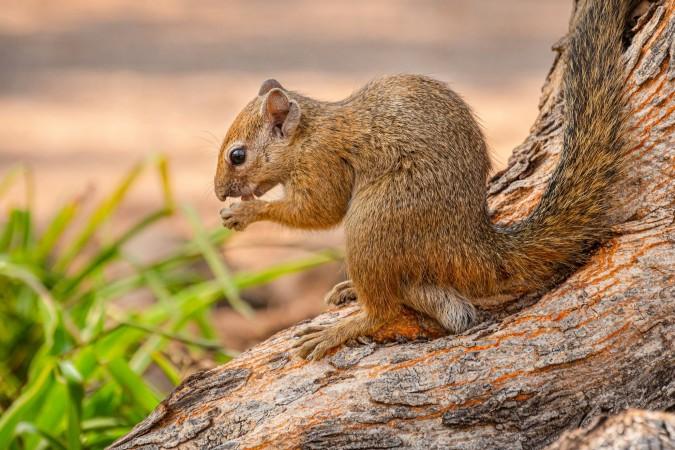
Overview of Maun
History & Cultural Influence
Maun's history is as diverse as its landscape. Originally a small village of the Batawana people, the town has evolved into a bustling hub thanks to its strategic location and growing tourism industry. The history of Maun is deeply intertwined with the rich cultural heritage of Botswana’s indigenous communities, including the Tswana people who have inhabited the region for centuries. Colonial influences are also evident, as Maun became a focal point during Botswana’s colonial era, contributing to its growth and development. Today, the town reflects a blend of traditional values and modern influences, offering visitors a glimpse into Botswana's past and present.
Interaction with the Locals
Maun, a town in northern Botswana, with a population of around 50,000, is a melting pot of cultures, with its population comprising predominantly Tswana people, alongside various ethnic groups from across Botswana and beyond. As the gateway to the Okavango Delta, Maun attracts a diverse mix of locals and expatriates, contributing to its vibrant community. The citizens of Maun are known for their hospitality and cultural richness, providing visitors with a warm and welcoming experience.
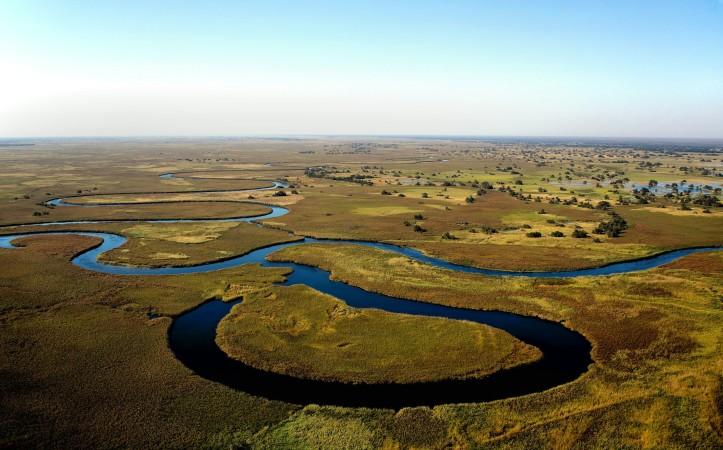
Okavango Delta - © Wynand Uys
Top Attractions in Maun
Okavango Delta
A UNESCO World Heritage site, the Okavango Delta is a sprawling oasis of lush waterways, lagoons, and islands. The Delta's seasonal floods create a rich mosaic of habitats that support an incredible diversity of wildlife. Visitors can explore this unique ecosystem on traditional mokoro (dugout canoe) trips, which offer a serene way to glide through the channels and spot animals like hippos, crocodiles, and a plethora of bird species. For a more immersive experience, opt for a guided walking safari on one of the Delta’s islands, where you can observe the flora and fauna up close.
Moremi Game Reserve
Situated on the eastern edge of the Okavango Delta, Moremi Game Reserve is a premier safari destination known for its rich biodiversity. Covering a mix of floodplains, woodlands, and savannah, Moremi offers some of the best game viewing in Botswana. The reserve is famous for its large populations of elephants, lions, leopards, and wild dogs. Visitors can embark on game drives through the diverse landscapes, enjoy boat safaris along the Xakanaxa Lagoon, or experience the thrill of a night drive to spot nocturnal wildlife. The reserve also features several well-appointed camps and lodges that provide a blend of luxury and wilderness.
Nxai Pan National Park
Nxai Pan National Park, part of the Kalahari environment, is known for its stunning salt pans and seasonal species migrations. The park’s landscape is characterized by expansive, flat salt pans that contrast with the surrounding grasslands and acacia trees. During the rainy season, Nxai Pan transforms into a verdant haven that attracts large herds of zebra and wildebeest, making it an excellent destination for witnessing the dramatic spectacle of the Great Migration.
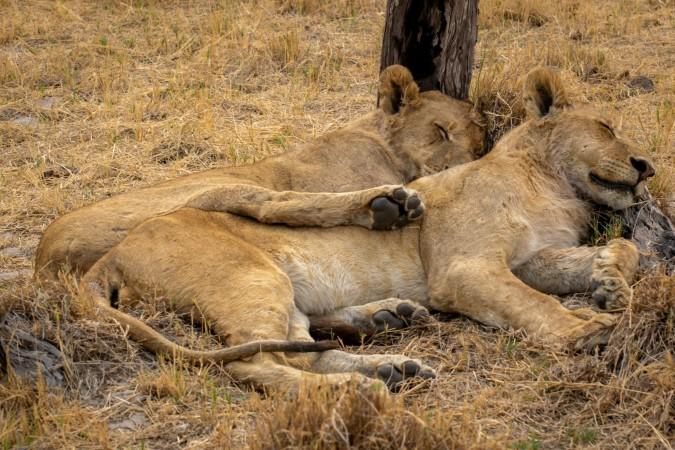
Lions in Moremi Game Reserve - © Andreas Vonlanthen
Must-Try Dishes in Maun
Maun’s cuisine is a flavorful journey through Botswana traditions. These dishes offer a rich taste of Maun’s culinary heritage, showcasing the diversity and depth of Botswana cuisine.
- Seswaa: A traditional Botswana dish made from beef or goat meat, slow-cooked until tender and shredded. It's usually seasoned with salt and pepper and eaten over pap (maize porridge) or rice. This hearty dish is often enjoyed during special occasions and communal gatherings.
- Vetkoek: A type of deep-fried bread that’s crispy on the outside and soft on the inside. Vetkoek can be filled with savory ingredients like minced meat or enjoyed with sweet spreads. It’s a popular snack or breakfast item in Maun.
- Bogobe: A traditional Botswana porridge made from maize or millet, similar to pap but often prepared with added flavors such as sugar or salt. Bogobe is sometimes served with meat or vegetables and is a popular breakfast or dinner choice.
- Bunny Chow: Although originally from South Africa, Bunny Chow is also enjoyed in Maun. It consists of a hollowed-out loaf of bread filled with a spicy curry, often made with chicken, beef, or vegetables. The bread soaks up the curry, creating a deliciously flavorful meal.
- Kalahari Truffles: A delicacy found in the Kalahari Desert region, these truffles are highly prized for their unique flavor and aroma. They are often used in local dishes or enjoyed as a gourmet treat.
- Tshotlho: A traditional dish made from maize meal and often served with meat or vegetables. It's a mainstay in many Botswana families, noted for its hearty and warming properties.
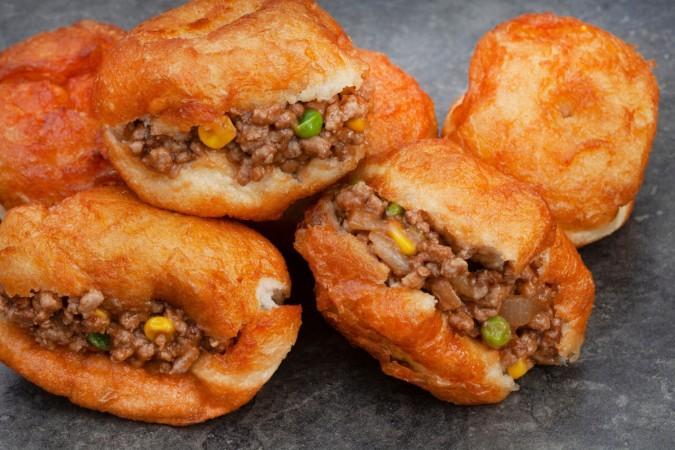
Vetkoek - © The Citizen
Festivals & Local Celebrations
Kuru Art Project
This festival is dedicated to the preservation and promotion of San (Bushmen) art and culture. The Kuru Art Project features art exhibitions, cultural performances, and craft markets that highlight the unique heritage of the San people. Attendees can view traditional San artwork, including paintings and beadwork, and participate in workshops to learn about San craft techniques. The festival also includes storytelling sessions and cultural demonstrations that offer insights into the San way of life.
Botswana Day
Celebrated on September 30th, Botswana Day marks the country’s independence from British rule in 1966. In Maun, this national holiday is observed with patriotic events, including parades, traditional dances, and cultural performances. The day is a celebration of Botswana’s national pride and unity, with activities that showcase the country’s history, achievements, and cultural heritage. It’s a lively and festive occasion that brings the community together in celebration of their shared identity.
Maun Cultural Festival
This festival takes place to celebrate the diverse cultures within Maun and the wider Botswana region. It features traditional music, dance, and culinary displays from various ethnic groups. The festival aims to promote cultural understanding and appreciation by offering visitors a chance to experience traditional Botswana customs and practices. It’s an excellent opportunity to immerse yourself in local traditions and enjoy authentic performances and local cuisine.
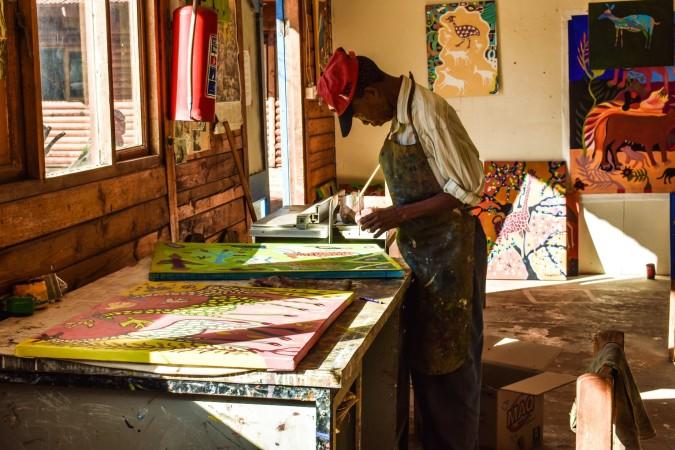
Kuru Art Project - © Kuru Art Official Facebook
What to Do in Maun
Maun offers a range of activities that cater to adventure seekers and nature enthusiasts alike. These activities highlight Maun’s appeal as a destination for both thrilling adventures and cultural exploration.
- Wildlife Safaris: Explore the Okavango Delta and surrounding reserves on guided wildlife safaris. Spot iconic animals such as elephants, lions, and hippos while enjoying the scenic beauty of Botswana’s landscapes.
- Mokoro Rides: Explore the Delta's rivers in a traditional mokoro boat. This serene ride offers close-up views of aquatic wildlife and bird species in a peaceful, eco-friendly manner.
- Fishing Trips: The Delta’s rich waters are ideal for fishing enthusiasts. Join a local guide for a fishing trip where you can catch species like tilapia and catfish while enjoying the tranquil environment.
- Cultural Tours: Engage with local communities and learn about traditional Botswana life through cultural tours. Visit rural communities, attend traditional rituals, and learn about the locals' customs and everyday routines.
Shopping in Maun
Maun offers a variety of shopping experiences that cater to different tastes and interests. Shopping in Maun provides an opportunity to take home a piece of Botswana’s culture and support local artisans.
- Local Markets: Maun’s bustling markets are perfect for exploring traditional crafts, clothing, and souvenirs. The Maun Market is a great place to pick up handcrafted items like beadwork, wood carvings, and traditional textiles.
- Craft Shops: For unique gifts and art pieces, visit the local craft shops. These stores often feature handmade goods created by local artisans, including jewelry, paintings, and pottery.
- Souvenir Stores: Browse souvenir shops for mementos of your trip to Maun. From traditional Botswana artifacts to modern keepsakes, these stores offer a range of items that capture the essence of your visit.

Observing wild animals during Wildlife Safaris in Moremi Game Reserve - © Jan Ludwig Tiedemann
Weather in Maun: Best Time to Visit
Maun experiences a semi-arid climate, making the weather a crucial factor for travelers planning their visit. Understanding the seasonal patterns can help you choose the best time to explore this vibrant destination.
Summer in Maun
Maun’s summer months are hot and wet, with daytime temperatures ranging between 30°C to 40°C (86°F to 104°F). The region also experiences occasional thunderstorms, especially from November to February, which bring welcome relief from the heat. The Okavango Delta swells during this period, making it a prime time for birdwatching and viewing lush landscapes.
Winter in Maun
Winter is the dry season, with cooler temperatures ranging between 10°C to 25°C (50°F to 77°F). This season is ideal for wildlife safaris, as animals gather around water sources, making them easier to spot. While nights can be chilly, the days remain pleasant and comfortable for outdoor activities.

Wet season in Maun - © Ulrico Zampa
Essential Travel Information
Getting Around Maun
- Taxis: Taxis are a convenient and affordable way to get around town. They can be easily hailed on the street, or you can arrange one through your accommodation. It’s advisable to agree on the fare before starting the journey, as taxis typically don’t use meters.
- Car Rentals: For those who prefer flexibility, renting a car is an excellent option for exploring Maun and the surrounding areas. Several car rental agencies operate in town, offering both 4x4 vehicles for safaris and standard cars for town driving. Keep in mind that Botswana drives on the left-hand side of the road.
- Mokoro (Dugout Canoe): To explore the Okavango Delta, traveling by mokoro is a unique and traditional experience. Guided mokoro rides are popular with tourists looking to navigate the delta’s waterways while enjoying the peaceful surroundings and wildlife sightings.
- Charter Flights: For those heading to more remote safari lodges or camps within the Delta, small charter planes are a common mode of transport. Maun Airport serves as a hub for these flights, making it easy to access remote locations that are otherwise difficult to reach by road.
ATM & Banking Services
Maun offers convenient ATM and banking services for tourists, with several ATMs located throughout the town, including the airport and shopping areas. Most ATMs accept international debit and credit cards, though it's wise to carry some cash as ATMs in remote areas can be less reliable. While major hotels and restaurants generally accept credit cards, smaller businesses and local markets often prefer cash payments.
Where to Stay in Maun
- Luxury Lodges: For those seeking a high-end experience, Maun boasts several luxury lodges located near the Okavango Delta. These lodges provide exclusive safari experiences, complete with private game drives, gourmet dining, and breathtaking views. Many offer premium amenities, making them perfect for a lavish getaway in nature.
- Mid-Range Hotels: Travelers looking for comfort at a moderate price can choose from a variety of mid-range hotels. These establishments often include modern amenities such as air conditioning, swimming pools, and on-site dining options, offering great value for families and couples alike.
- Guesthouses: For a more personal and intimate experience, Maun has a selection of guesthouses and B&Bs. These smaller, often family-run accommodations provide a cozy atmosphere, allowing guests to enjoy warm hospitality and insights into local life.
- Safari Camps: Adventurous visitors can opt for camping, with several sites available that cater to different styles, from basic campsites to more luxurious glamping experiences. Camping allows you to immerse yourself in Maun’s natural beauty and is an excellent budget-friendly option for those exploring the Okavango Delta.
Articles for you

Explore Yala National Park - Sri Lanka Travel, Asia
Tucked away in Sri Lanka’s southeastern corner, Yala National Park is where wild nature meets deep tradition. Known worldwide for its leopard population, the park is also home to elephants, sloth bears, crocodiles, and hundreds of bird species. Beyond wildlife, Yala opens doors to a cultural landscape dotted with ancient temples, Buddhist ruins, and coastal villages. For travelers seeking more than just a safari, Yala offers a chance to explore eco-tourism, local communities, and sacred heritage sites.
Population: The Yala National Park area doesn’t have a human population.
Economy: The economy around Yala National Park thrives on a blend of eco-tourism, agriculture, and local services. Safari tours, eco-lodges, and cultural experiences drive steady income for nearby towns like Tissamaharama and Kataragama, supporting thousands of families.
Landmarks: Famous for Block I of Yala and wildlife encounters, including elephants, sloth bears, crocodiles, and exotic bird species.

Explore Galle - Sri Lanka Travel, Asia
Nestled on Sri Lanka’s southern coastline, Galle is a vibrant city where history meets the sea. Its cobbled streets, colonial architecture, and serene beaches make it a must-visit destination for travelers seeking a blend of culture, adventure, and relaxation. A UNESCO World Heritage site, Galle captivates visitors with its Dutch Fort, bustling markets, and friendly locals. Whether you’re exploring the ramparts at sunset or savoring fresh seafood by the shore, Galle promises an unforgettable journey into Sri Lanka’s heritage.
Population: Approximately 113,000 in 2023.
Economy: Galle’s economy thrives on tourism, trade, and fisheries. The city’s historic fort, colonial architecture, and coastal charm draw thousands of international visitors each year, making tourism its main economic driver. Fishing remains vital for local livelihoods, supplying fresh seafood across the region.
Landmarks: Famous for the Galle Fort, Dutch Reformed Church & Maritime Museum, and Unawatuna Beach.

Explore Bentota - Sri Lanka Travel, Asia
Nestled along Sri Lanka’s southwestern coast, Bentota is a tropical paradise that blends golden beaches, vibrant culture, and thrilling adventures. Famous for its calm waters, luxury resorts, and scenic river estuary, Bentota has become a top destination for travelers seeking both relaxation and authentic experiences. From serene beach walks at sunrise to adrenaline-pumping water sports, this coastal town offers a perfect balance of leisure and exploration. With its proximity to Colombo and Galle, Bentota is easy to reach, making it an ideal stop for both short escapes and extended holidays.
Population: Approximately 37,000 in 2023.
Economy: Bentota’s economy thrives mainly on tourism, which drives local businesses such as hotels, restaurants, and wellness retreats. The town also benefits from fishing, coconut cultivation, and handicrafts like wood carving and batik textiles. Many residents rely on the growing demand for water sports and Ayurvedic treatments, making tourism the backbone of both income and employment in the area.
Landmarks: Famous for Bentota Beach, Bentota River Safari, and Kande Vihara Temple.

Explore Mirissa - Sri Lanka Travel, Asia
Mirissa is a charming coastal town on Sri Lanka’s southern shoreline. Known for its golden beaches, turquoise waters, and vibrant marine life, it has become a must-visit stop for travelers exploring the island. Many come for whale watching, surfing, and sunset views at Coconut Tree Hill, but Mirissa offers much more than postcard beauty. The fishing boats you see anchored by the bay carry generations of stories. Local traditions, delicious cuisine, and a laid-back rhythm of life shape every visitor’s experience.
Population: Approximately 4,700 in 2023.
Economy: Mirissa’s economy is largely shaped by its coastal location. Fishing has long been the backbone of local livelihoods, with generations relying on the Indian Ocean for income. In recent decades, tourism has become the main driver of growth, thanks to whale watching, surfing, and beachside hospitality.
Landmarks: Famous for Mirissa Beach, Coconut Tree Hill, and Parrot Rock Bridge.

Explore Nuwara Eliya - Sri Lanka Travel, Asia
Tucked away in the Central Highlands of Sri Lanka, Nuwara Eliya is often called “Little England”. With its rolling tea plantations, cool misty mornings, and colonial charm, this mountain town feels like a step into another world. Travelers come here to breathe fresh air, walk through flower gardens, sip the finest Ceylon Tea, and enjoy a pace of life far from the island’s busy cities. Whether you’re drawn by scenic landscapes, heritage architecture, or the warmth of its people, Nuwara Eliya is a destination that blends nature, culture, and history in perfect harmony.
Population: Approximately 781,000 in 2023.
Economy: Nuwara Eliya’s economy thrives mainly on tea production, as it sits in the heart of Sri Lanka’s central highlands, famous worldwide for Ceylon Tea. The city also benefits from a growing tourism industry, attracting visitors with its colonial charm, cool climate, and scenic landscapes.
Landmarks: Famous for Gregory Lake, Hakgala Botanical Garden, and Victoria Park.

Explore Sukau - Malaysia Travel, Asia
Nestled on the banks of the Kinabatangan River in Sabah, Malaysian Borneo, Sukau is a destination where wildlife, culture, and conservation come together. Known as one of Asia’s top spots for river safaris and eco-tourism, this quiet village offers a front-row seat to encounters with Bornean orangutans, pygmy elephants, proboscis monkeys, and exotic birdlife.
Population: Approximately 1,400 in 2019.
Economy: Sukau’s economy is shaped by its riverine location and natural resources. Traditionally, the Orang Sungai community relied on fishing, small-scale farming, and forest gathering for their livelihood. Today, the village has shifted toward eco-tourism, with river cruises, jungle trekking, and homestays providing income.
Landmarks: Famous for the Kinabatangan River cruises, Gomantong Caves, and Ox-bow lakes and wetlands.
